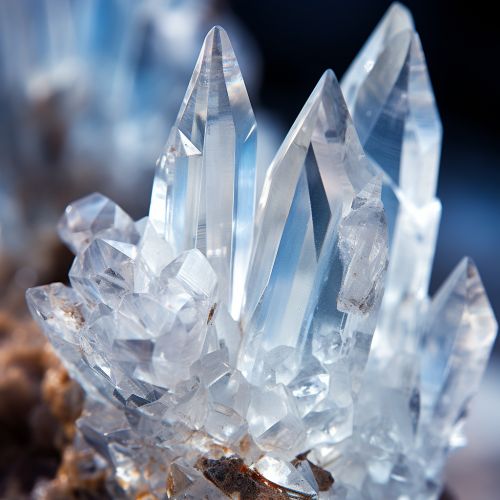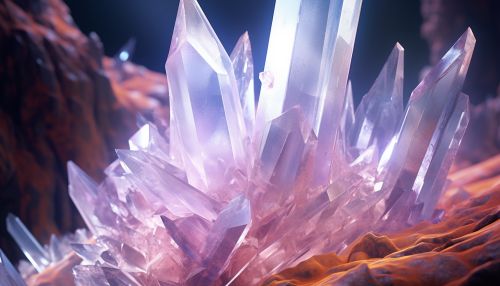Quartz
Overview
Quartz is a common mineral found in the Earth's crust. It is the second most abundant mineral in the Earth's continental crust, after feldspar. Quartz is composed of silicon and oxygen atoms in a continuous framework of SiO4 silicon-oxygen tetrahedra, with each oxygen being shared between two tetrahedra, giving an overall chemical formula of SiO2.
Physical Properties
Quartz is a hard, crystalline mineral composed of silicon and oxygen atoms. The atoms are linked in a continuous framework of SiO4 silicon-oxygen tetrahedra, with each oxygen being shared between two tetrahedra, giving an overall chemical formula of SiO2. Quartz is the second most abundant mineral in Earth's continental crust, behind feldspar.


Quartz crystals are hexagonal, usually forming in the shape of a six-sided prism that terminates in six-sided pyramids. They can be transparent, translucent, or opaque; they may be colorless or tinted by impurities. Quartz's hardness, lack of cleavage, and conchoidal fracture can differentiate it from other minerals.
Classification
Quartz can be classified into different types based on its crystal structure. The two most important types of quartz are alpha-quartz and beta-quartz. Alpha-quartz is the most common and is found in nearly every environment. It is stable at Earth's surface temperatures and pressures. Beta-quartz is less common and is stable at high temperatures and pressures.
Occurrence and Formation
Quartz is a common constituent of granite, sandstone, limestone, and many other igneous, sedimentary, and metamorphic rocks. It is an essential component of granitic igneous rocks such as granite, rhyolite, and pegmatite. Quartz veins are formed when open fissures are filled with hot water during the final stages of rocks cooling, and silica is deposited in the fissure to form a vein.
Uses
Quartz has a variety of uses, many of which stem from its properties as a piezoelectric material that can transform mechanical pressure into electrical current and vice versa. This makes it useful in oscillators and resonators, where it can generate and stabilize frequencies. Quartz is also used in the manufacture of glass, ceramics, abrasives, and cement, and for many industrial uses such as sandblasting, cutting, and grinding.
